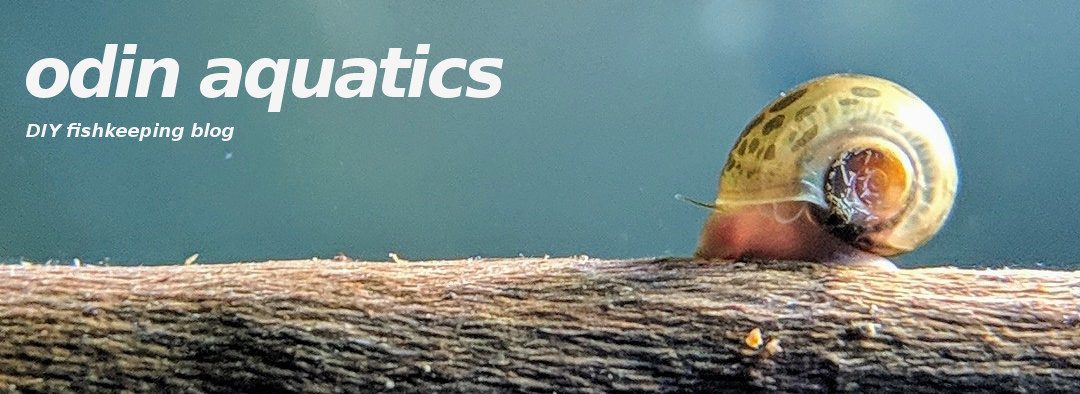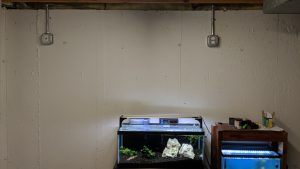I've been spending time organizing my fish room this week and getting things cleaned up. I don't want to have power strips laying on the floor in case of a flood in the room, so I am mounting all of them. This is also an opportunity to work on storage and organization for each stand.
Mounting a power strip
Most power strips I've seen come with mounting holes on the back, like the photo below. This makes them super easy to mount to a vertical surface. All you need is a drill and some screws that have a wide enough head to hook into the power strip. I just used some small wood screws that I had kicking around. You can hang a power strip with just one screw, but if you want it to stay in place its better to use two.
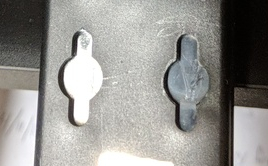
On this stand I drove two screws into the inside of the cabinet, just under 5 inches apart. To get the exact distance between screws you want to measure the distance between slots on the back of the power strip. Then you just drive in the screws and slide the power strip onto them. If you want to move the power strip later, it will easily slide back off.
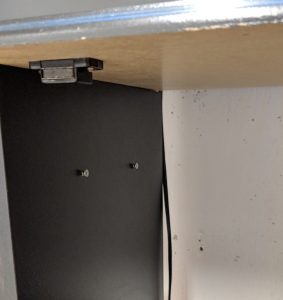
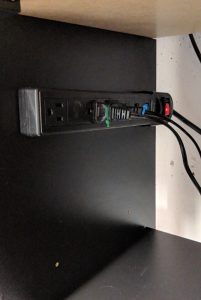
Tip: use cable ties to color code wires
For this tank I used small colored cable ties to mark the power cords for my two filters. Since one filter has blue on it, I know that the blue cord is for that filter, and the green one is the other filter. This helps a lot during water changes and maintenance. I can quickly unplug the equipment I want disconnected without having to guess.
You can also buy power cable labels that look a little nicer than zip ties to identify your cords.
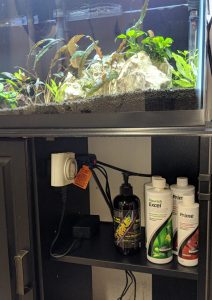
With the power strip up off the shelf I have more room for storage under my stand. You can see here this planted tank has 4 powered devices: the heater, the light, and two filters. I know which cord goes to each of these devices without having to trace the wire back behind the tank. Having the strip up above the shelf also helps avoid getting it wet if I spill water or chemicals.

